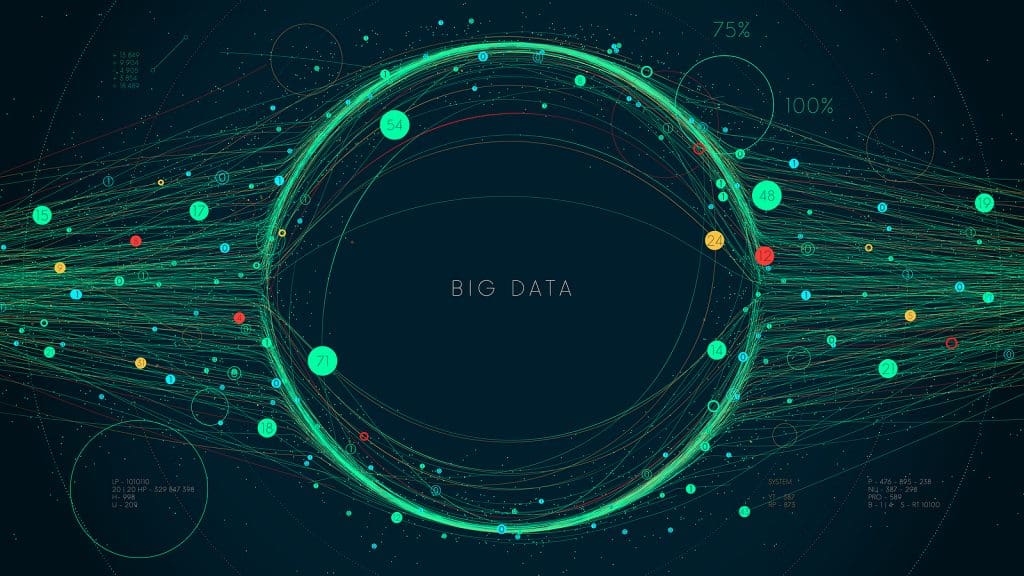Big data analytics (BDA) is the systematic extraction and analysis of random data sets into meaningful information. In early 2020, the total internet data was 44 zettabytes, while as per the World Economic Forum, around 463 exabytes of data would be generated daily by 2025.
Table of Contents
ToggleUsing specialized storage, processing applications, and skills to analyze such massive magnitudes of data, we can gain insights, which, in turn, would enable us to innovate for digital-driven business.
With the emergence of big data analysis, enterprises are integrating their existing corporate data with the non-conventionally acquired big data, thus facilitating advanced predictive business analytics.
Types and Sources of Big Data Used in Analytics
While raw data is characteristically unorganized, big data can be typically classified into types according to its form: Structured and Unstructured. While the former resides within assigned fields in a file system, the latter does not follow predefined fields or structures. Usually, unstructured data is textual. Again, based on the sources, Big Data can be divided into certain broad categories:
- Conventional Data: Being predominantly structured, this data type is traditionally categorized under the ledger system. Broadly, it includes transactional data from Enterprise Resource Planning (ERP) systems and online stores, as well as customer data from Customer Relationship Management (CRM) systems.
- Social Data: Specifically useful for Business Intelligence (BI), social data is mostly unstructured and often misleading for conventional software. Consequently, most enterprises refrain from using it for big data analysis projects. This data type includes metadata related to social media interactions (location, preferences, etc.) and data generated on other platforms (customer feedback, search engine trends, etc.).
- Sensor Data: As Machine Generated Data (MGD), this data type is collected by internet-enabled monitoring and reporting sensors. Typically presented as structured data, it’s useful for predictive analysis, compliance and fault detection, and for improving user experience. Finance, healthcare, and the manufacturing industries are among the leading users of sensor data.

Where is Big Data Analytics used in the Enterprise
According to Forbes and Dresner Advisory Services, big data had been integrated into the regular processes of various enterprises from a meager 17% in 2015 to a whopping 59% in 2018, amounting to a Compound Annual Growth Rate (CAGR) of 36%. With industries like telecommunication, insurance, and advertising reaping the most benefits from the adoption of this technology, financial services, technological services, and the healthcare sector name big data as essential to their services. 80% of all enterprises agree big data is predominant in their company and is involved in everything from product distribution to sales and marketing.
The following three features of big data analytics have been adopted and used most readily by enterprises: Customer/Social Analysis, Forecasting, Product development, and Finance.
The first two uses of big data and analytics indicate the growing trend of enterprises turning to a customer-centric approach. This approach is relied on to gain visibility and insight into customer behavior, which is, in turn, used to support improved customer satisfaction. The marketing and sales departments are leveraging big data to help with planning marketing strategies, identifying trends in strategy performance. Data analytics can also help product development teams improve products and improve manufacturing processes.
Typically, forecasting is critical for finance departments for purposes of estimation and projection of future revenue and expenses that will lend to a solid base to financial plans and budgets.
Big data and analytics are used in the following processes:
- Efficient product distribution: Big data analysis can increase the efficacy of product distribution starting right from the warehouse and loading docks to shipping and distribution. Big data streamlines the process and makes it more time-saving and labor-saving. For example, a robust big data analysis project, if implemented correctly, can enable efficient loading of products on trucks according to the sequence in which they will be delivered.
- Customer-centric model: Big data analysis identifies customer behavior and trends which enables enterprises to oblige customers with personalized marketing. Sales information, feedback threads, text analytics, and social media sites are all valuable sources of big data that strengthens the customer-centric model.
- Enhancing business operations: Customer feedback, search engine trends, financial data, etc., all help enterprises achieve the advantage. Forecasting, as well as real-time monitoring in manufacturing, are of immense value to enhancing operations.

Why you Need BDA in the Enterprise
As can be inferred from the previous section on the uses of big data analysis, the necessity of big data can be said to culminate in an insightful, meticulous, and, therefore valuable knowledge of the business. It inevitably leads to a capable workforce, guarantees customer and employee loyalty, increases productivity, and gives scope to innovation.
The necessity of big data lies in the benefits it comes with. To highlight its necessity, in the paragraphs below are examples of the combined usage of big data and analytics, and their benefits in various enterprises:
- Health industry: Big data analytics in the healthcare sector is proving to be of crucial value. It allows access to both health-related and non-health data to support forecasts of future healthcare needs for any given demographics. Storing the vast range and magnitude of health data — medical history, biomedical data, diagnostics data, and so on — as Electronic Health Records (EHR), facilitates big data analysis for prompt healthcare services and innovations. Further, it can also help in epidemic monitoring, predictive geriatric healthcare, and resource optimization for reduced costs.
- Manufacturing: According to IBM, the manufacturing industries employ big data and analysis to seize market opportunities by leveraging both operational and strategic business data. Prompting customer-centric outcomes, improving operations, and optimizing finance and management, are some of the crucial outcomes of big data analysis, varying according to specific business needs. Moreover, while 52% of manufacturers are using visual sensor data for real-time tracking, the manufacturing industry as a whole is more enthused about adopting technologies to handle unstructured data, especially for aspects like supply chain management.
The Final Word on Big Data Analysis in Enterprises
While helping enterprises to keep with the ever-changing consumer landscape, and the rising demand for personalization, the combined power of big data and analytics unveils unprecedented economic value.
A robust big data analysis project enables the Enterprise to leverage the inexhaustible big data repository. However, it’s crucial that business administrators implement big data analytics only as per their specific needs and demands.
Summary:
Big Data Analytics in Enterprise
Big data analytics (BDA) is the systematic extraction and analysis of random data sets into meaningful information. Using specialized storage, processing applications, and skills to analyze such massive magnitudes of data, we can gain insights, which, in turn, would enable us to innovate for digital-driven business. With the emergence of big data analysis, enterprises are integrating their existing corporate data with the non-conventionally acquired big data, thus facilitating advanced predictive business analytics. Types and Sources of Big Data Used in Analytics: Conventional Data, Social Data, Sensor Data. Big data and analytics are used in the following processes: 1. Efficient product distribution. 2. Customer-centric model. 3. Enhancing business operations. A robust big data analysis project enables the Enterprise to leverage the inexhaustible big data repository. However, it’s crucial that business administrators implement big data analytics only as per their specific needs and demands.




